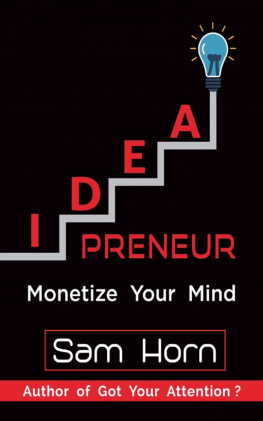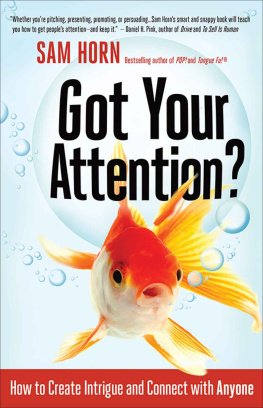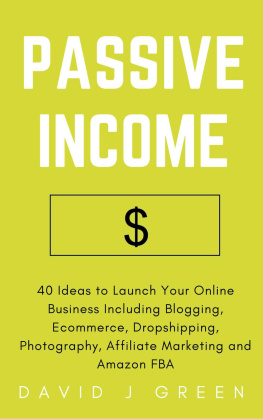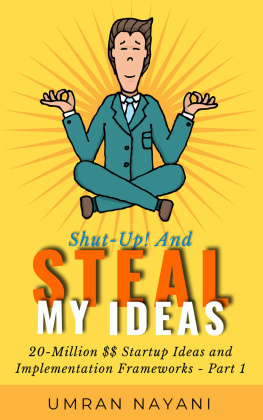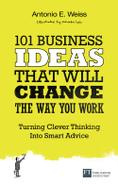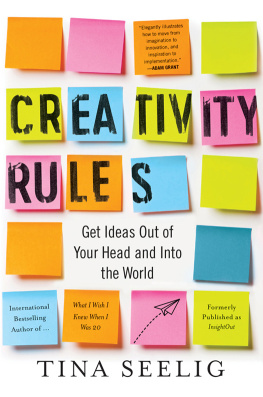IDEApreneur
Monetize Your Mind
By Sam Horn,
Author of POP!, Tongue Fu! and Got Your Attention?
All rights reserved. Copyrighted by Sam Horn,2016
Introduction
No matter what people tell you, words and ideascan change the world. Robin Williams
Welcome. Congratulations to you for carvingtime out of your busy schedule to discover how to make a mint fromyour mind.
I agree with Robin Williams that words andideas can change the world and your world forgood.
If your goal is to produce one-of-a-kindideas you can monetize, youre in the right place.
Youre about to discover how to generatecommercially-viable ideas (what I call equity ideas) that are sointeresting, unique and bottom-line beneficial, people will gladlypay for them.
Most importantly, youll learn how to act onyour ideas and turn them into income.
The premise of this book and my approach tothis topic is that ideas in our head help no one.
Ideas themselves dont have the power tochange the world and become a profitable reality until we turn theminto a tangible product, service or business.
Thats why this book provides you with astep-by-step SYSTEM on how to become an IDEApreneur who consciouslyand strategically:
increases your flow ofideas
assesses your ideas foruniqueness and money-making potential
positions, packages andcommunicates your ideas so they get noticed, respected andbought
markets, merchandises,monetizes your ideas through a variety of strategic businessactivities
Best-selling author Kurt Vonnegut was asked,Whats the secret to writing a great book? He thought about itfor a moment and then said, Youve got to be a good date forthe reader.
My goal is to be a good date foryou.
I promise not to waste time on abstracttheories that dont work in the real world. Youre about to learnproven techniques and tools you can use immediately to generatemarketable, memorable, merchandisable ideas that get noticed andget bought.
Ready to get started?
Read on!
Section 1: Readyto Become an IDEApreneur?
Time is long, but life is short. StevieWonder
Stevie is right.
Life is short and thinking small is a wasteof time and talent.
Why not think big? Why not learn how toleverage time by thinking up equity ideas that can make a positivedifference for others and a prosperous living for you?
This first section shows you how to becomean IDEApreneur so, for the rest of your life, youre capitalizingon your minds gifts instead of taking them for granted andthrowing away their money-making, difference-making potential.
Chapter 1: WhatsThe Big Idea?
Ideas are the beginning points of all fortunes. Napoleon Hill
The purpose of this chapter is to convinceyou that ideas arent frivolous; they can, as Napoleon Hill pointedout, be the fount of good fortune, your pathway to prosperity.
Instead of ignoring ideasand telling yourself, Yeah, its a good idea, but Im not anentrepreneur, or I dont have a degree or educational backgroundin this, or I dont have any money to invest in this, pleaseunderstand that ideas believe in equalopportunity .
Big ideas dont discriminate. They can occurto anyone: teens, teachers, stay-at-home moms, CEOs, attorneys,taxi drivers.
The question is, do you ACT on your big idea or do you let it slipthrough your mental fingers ?
As youre about to findout, anyone canprofit from a big idea if you evaluate its viability, draft astrategic plan to turn it into reality, and persevere until youproduce profitability.
Please read this book with pen in hand (or ahighlighter on your e-reader) and take notes on how you plan toapply these step-by-step instructions to turn YOUR big idea into aprofitable reality.
Ill always remember my first bigidea.
We had just returned from an old-fashionedfamily Christmas reuniting with cousins, aunts and uncles atGrannys house in Eagle Rock, CA. We ate the traditional turkeydinner with stuffing, mashed potatoes, Grannys gravy (nonebetter), and her special overnight fruit salad with home-madewhipped cream. Obviously, this was before anyone cared aboutcounting carbs.
We arrived home after 3 days away to findour poor Dalmatian dog Tres (three spots on the top of his head)dehydrated and starving. The neighbor we had asked to watch him hadleft town in an emergency and forgotten to ask someone else to takecare of him.
For months afterwards, I felt terriblyguilty that we had left our dog with no food or water. I rememberwaking up in the middle of the night with an idea. Why not design acontraption that metered out water and food every day so we couldbe sure our beloved pet was taken care of while we were away?
I couldnt get the idea out of my head. Itjust made so much sense. I envisioned millions of people (and theirpets) benefiting from this backup plan.
I never did anything about it though. I wasjust a kid after all. What did I know about inventing something?I didnt even tell anyone my idea because I was afraid theyd laughat me. Furthermore, I rationalized, if it was such a good idea,someone would have already thought of it, right?
Imagine my dismay when I was leafing througha mail order catalog in my teens and, there it was, a device thatportioned out food and water for pets. Someone else made a fortunebecause they talked themselves into acting on that idea while I had talked myself out of it.
Years later, I had another bright idea. Iswam competitively growing up in California, both in ourcommunitys summer league and for my high school.
Upon moving to Hawaii in the early 80s, Iparticipated in Oahus annual 2.4-mile Rough Water Swim, held offWaikiki Beach every Labor Day.
I thoroughly enjoyed training in the oceanat Ala Moana Beach Park. Then, we moved to a Honolulu high-risewhich had one of those tiny apartment pools. It was frustratinggetting my daily mile in because the pool was so small. Stroke,stroke, turn. Stroke, stroke, turn. It took all thefun out of swimming and I started skipping training workouts.
I woke up one night (by the way, theres areason we often have ideas in the middle of the night and itsexplained in ) and wondered, Why notdesign a swim leash so I could tie myself to the end of the pooland churn away to my hearts content without having to stop and doa flip turn every few seconds?
Many serious swimmers stop using theirbackyard pools because its an exercise in frustration (so tospeak) doing laps in them. The Swim Leash made it possible to getlost in that athletic reverie, that blissful ZONE, in which yourmind switches to automatic pilot and youre no longer thinkingabout the stitch in your side, the cramp in your legs, or the achein your arms.
I made up a makeshift one, shaping a beltfrom the rubber fabric of a wet-suit, a couple of D rings, and alength of water-proof boat rope. I got in the pool, tied myself tothe entrance ladder and started swimming. IT WORKED!
Furthermore, the Swim Leash worked withevery stroke, including my favorite, the backstroke. I lovedlooking up at the sky (instead of the bottom of the pool), watchingbirds fly by and letting my mind wander while I got a vigorousworkout.
After testing the prototype, I went to aninvention convention full of hope and dreams and promptly gotoverwhelmed.
Several experts agreed it was viable, buttold me Id have to manufacture it overseas since labor costs inHawaii were so high. Plus, they said Id need to hire a lawyer tohandle the patent process, obtain venture capital, locatesuppliers, purchase liability insurance etc.
Bummer.
I had two small sons (Tom and Andrew, nowthriving adults) and an active career as a professional speaker.Who had the time or resources to fly overseas and put all thistogether? I reluctantly concluded I wasnt in a position to pursuethis and put the project on the shelf (literally andfiguratively).
Next page
